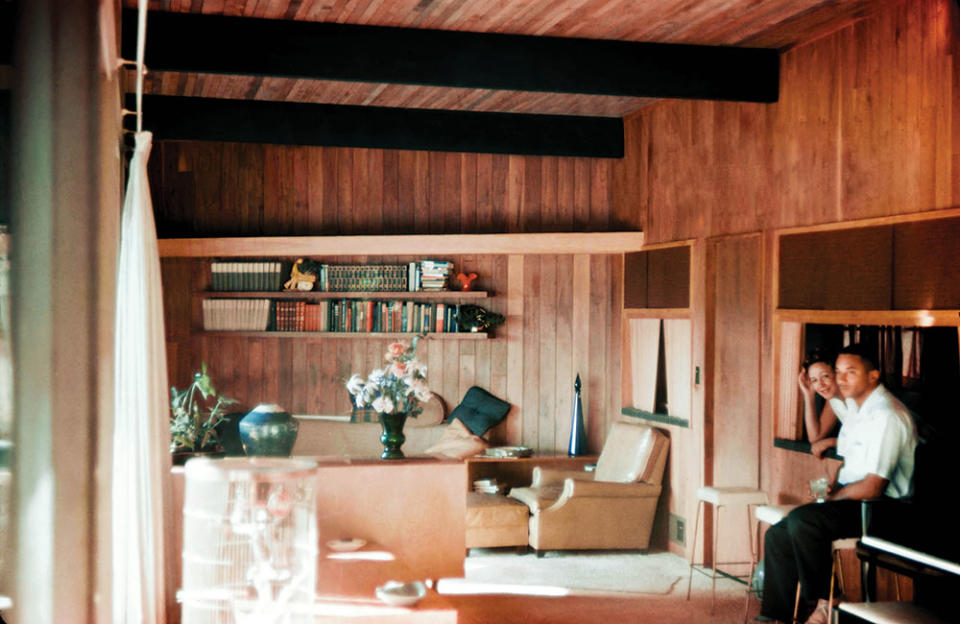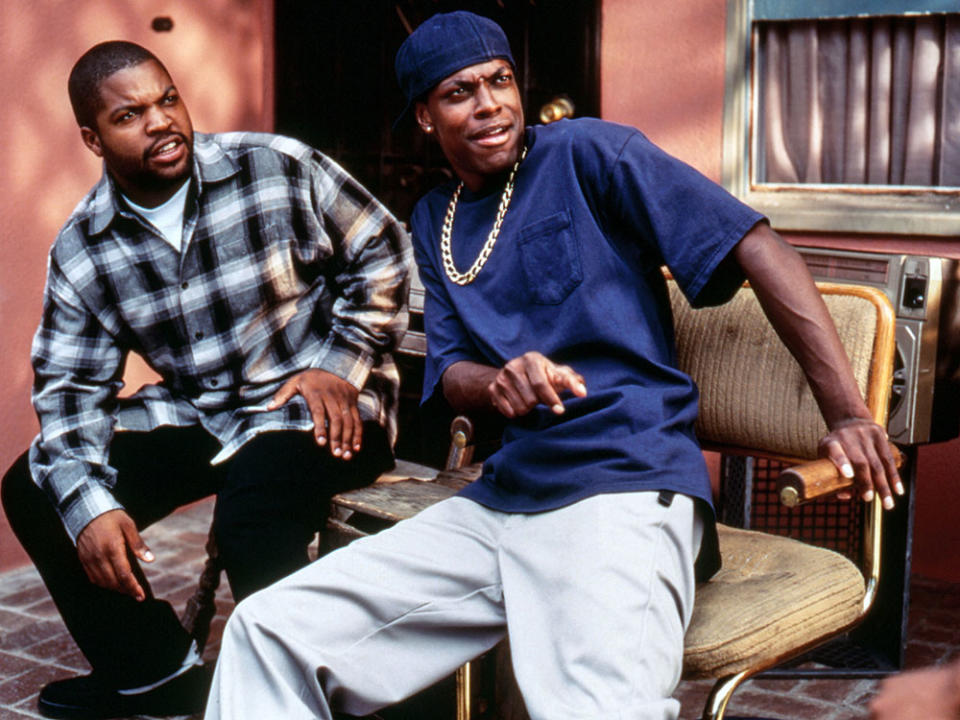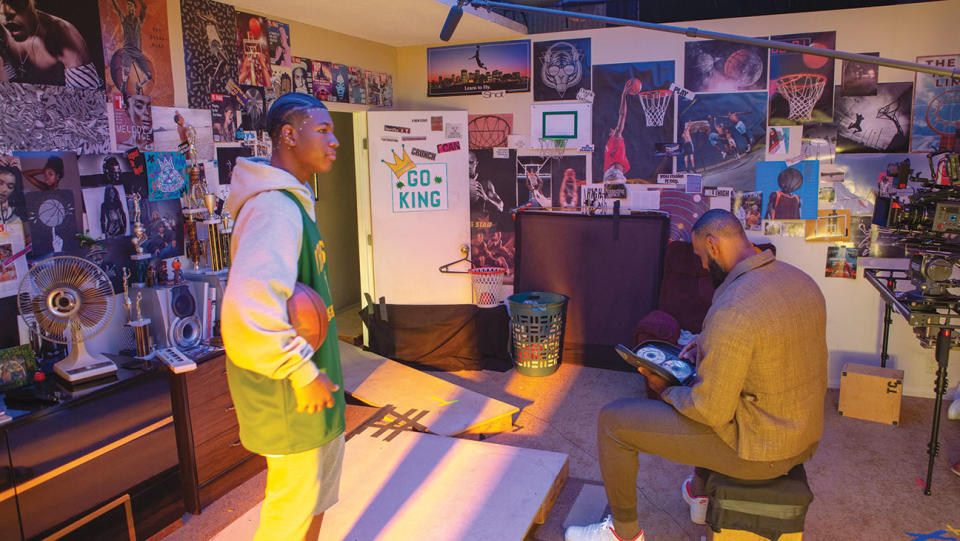Finding Overlooked Midcentury Beauty in South L.A.
- Oops!Something went wrong.Please try again later.

Jerald Cooper’s career began in music, managing artists like Young Guru (Jay-Z’s audio engineer) and Ama Lou, a British R&B singer-songwriter whom he eventually signed to Interscope. But after years of working in music production and creative direction for artists, Cincinnati-born Cooper was feeling burnt out creatively, until a stroll in his native Midwest neighborhood sparked an idea.
Frustrated by circular conversations about gentrification with no clear solutions offered, Cooper realized that many people in his community didn’t even know the architectural significance of the buildings around them. “You want to save the hood, but what are the basic things that you could know?” recalls the architecture aficionado of what led to him launching his Instagram account @hoodmidcenturymodern, which documents for its 63,000 followers midcentury modern architecture in Los Angeles, as well as other cities.
More from The Hollywood Reporter
Spanish Home Built in 1932 for 'Wizard of Oz' Choreographer Lists for $5M (Exclusive)
Stylist Jeanne Yang Lists 1962 Richard Neutra House for $3.3M (Exclusive)
Inside the Real 'Only Murders in the Building' Building in Manhattan
Online, Cooper’s tone is as conversational as it is during our interview (the account’s Instagram bio reads: “Yes!! There is midcentury modern design in the hood!!”) but equally authoritative in his scope of research and knowledge on design. “I basically did a hood midcentury modern case study. Then boom, the account was born,” he says.
The goal of his digital archive, which he oftentimes refers to as a survey, is to create a location-based database of beautifully designed places for people to visit and learn more about, in an effort to educate the public and inspire people to address the threat of decaying buildings and rapidly changing neighborhoods.
“When you’re a person coming from a culture that usually just gets moved into places or doesn’t have many options to live somewhere, [those places don’t seem] that beautiful,” Cooper says. “I thought it would be quite clever if we understood [the history] in a way that’s palatable and [accessible] so we can understand why we’d preserve it.”
His Instagram account is flooded with photos he’s taken as a self-proclaimed “neighborhood explorer” of midcentury homes, churches, apartment complexes and commercial buildings (motels with atomic starbursts on their signs, brilliantly painted liquor stores, Googie-style diners, modernist laundromats) in areas like South Los Angeles, Leimert Park and Compton, discovered through diligent research or with help from his followers.
Some of Cooper’s personal favorite modernist homes around L.A. include the Neutra VDL Studio and Residences in Silver Lake (in 2020, during the Los Angeles Design Festival, the studio’s director invited Cooper to a weeklong residency at the estate), and a West Adams house commissioned in 1954 by a prominent Black physician, Dr. John Marshall Robinson and his wife, Doris. “[She] was essentially a Martha Stewart of her day, publishing cookbooks, with radio and television appearances,” says Cooper.

Naturally, California modernism (which prioritizes glass and clean lines, in an effort to allow Los Angeles’ specific quality of light and views of the city’s vistas to shine through) is heavily featured on the Instagram account, but Cooper also gives equal real estate to Chicago modern, Michigan modern, and other variations on this era’s ever-popular style.
“I feel like my performance art is seeing Black folks in spaces and having the confidence to say, ‘I want to be living there because I feel like it suits me.’ I want to be able to translate the confidence that we need to be able to start picking our spaces.”
An essential part of Cooper’s growing education and preservation movement is accessibility; in 2020, for example, he released a deck of Hood Century flashcards, which depict and define different architectural styles, including expressionism, streamline, art nouveau, minimalism, constructivism, and postmodernism. But he also uses the worlds of film and television to reach audiences.

“I really look at pop culture as a way to make it sticky. So if I show you the house on Girlfriends, which was midcentury modern, if I can start to call out things that you’re actually looking at, then maybe it can help you learn a little bit easier,” he says. “Marcel Breuer’s Cesca chair is the chair that Craig and Smokey are sitting in all the time in Friday. I want us to at least know that that exists as an intentional design. That’s around, it’s been around, and it has a name.”
Lately, Cooper has worked as a location scout, set design consultant and architectural historian for music videos and commercials. Rapper Earl Sweatshirt hired Cooper to find a location for his “2010” music video, released in 2021. “He wanted it to be indoor, outdoor,” Cooper says, who found the perfect fit in a friend’s modernist home in Sherman Oaks. “He needed a house that had nature even when he was in the house. In the kitchen, you’re looking over a Japanese garden.”
That opportunity led to another, this time designing a set for a 2022 Super Bowl ad for Crypto.com in which LeBron James has a conversation with his adolescent self in a bedroom designed to mimic the NBA star’s actual childhood room. “LeBron actually grew up in a midcentury apartment building in Akron, Ohio,” says Cooper, who pulled up records of the actual shape and style of James’ room to make it accurate. “I went down to the tee of what we know from the era, and [incorporated] it from the set design perspective.”

Cooper’s work is at once nostalgic for designs of yesteryear, present in its urgent desire to preserve them, and also Afrofuturist in its mission to create a movement of young African Americans in particular to take ownership over their neighborhoods. “I think one of the biggest issues facing us right now is housing,” Cooper says with a political lilt. “Where am I living? Where am I staying? Where am I building community?”
These questions, along with what “African-American modernism” looks like, drive his research, and his near-obsession with collecting and cataloging midcentury modern design in every city he visits.
“I think there’s a new Black archival movement happening … these entities are a sum of their catalogs,” Cooper, who has plans to guide architecture tours, says. “Issa Rae’s dynamic run of Insecure is a Black modernist tale. I could show you Black modernism in LA by just showing clips of her show.”
A version of this story first appeared in the July 27 issue of The Hollywood Reporter magazine. Click here to subscribe.

